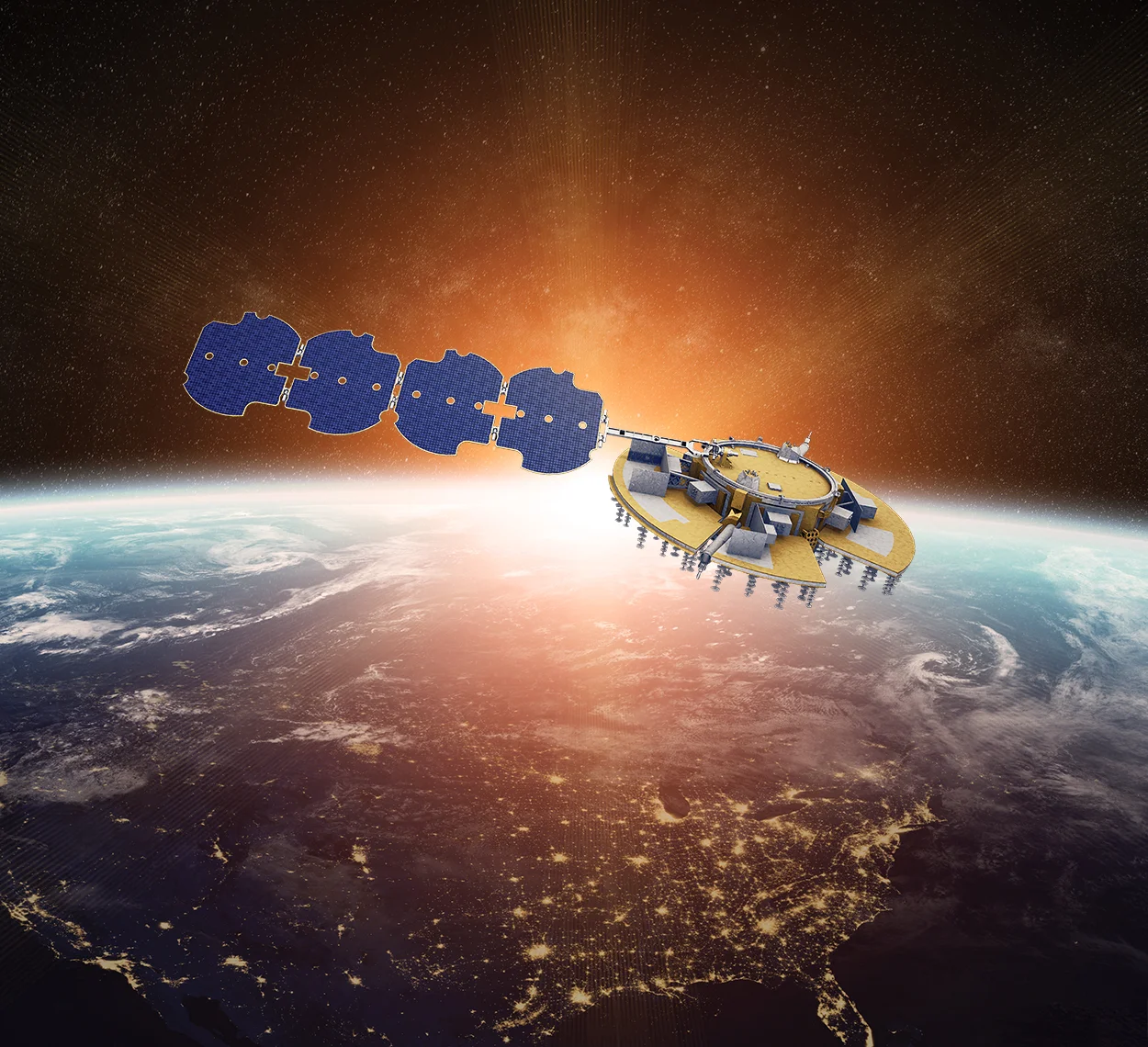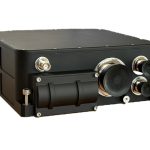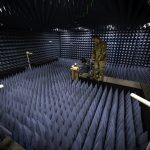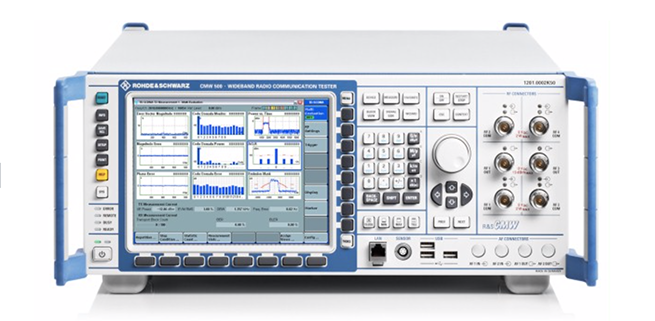Set to launch in late 2024, the NTS-3 satellite system developed by L3Harris together with the Air Force Research Lab (AFRL) is the Department of Defense’s first experimental, integrated navigation satellite system in 50 years.
The Navigation Technology Satellite-1(NTS-1) and NTS-2 launched in the 1970s provided the backbone for the GPS services we rely on today, in military and civil contexts. The systems confirmed the accuracy and reliability of satellite-based atomic clocks, providing the timing element foundational to positioning, navigation and timing (PNT). The effects of relativity on the onboard cesium atomic clocks were measured and corrected such that a GPS receiver on Earth could validate the rate of GPS time was the same as Coordinated Universal Time (UTC).
In 2019, the Department of the Air Force designated NTS-3 as one of three initial Vanguard programs to innovate solutions to the unique 21st century threats to GPS availability and reliability. After several years of delays, NTS-3, developed by L3Harris, is nearing its launch date aboard the ULA Vulcan Centaur rocket. While experimental in nature, the capabilities around resilient PNT that NTS-3 will be testing are mission critical to maintaining navigation signal integrity and reliability in contested environments where GPS is constantly jammed or degraded. NTS-3 is intended to demonstrate the value of multilayer resiliency and prove critical technologies engineered to counter and mitigate the threat posed by the denial and degradation of PNT.
“NTS-3 is the first U.S. experimental, integrated navigation satellite system to demonstrate and test technologies for implementation in future GPS missions,” said Andy Builta, vice president and general manager, Surveillance Systems, L3Harris. “This is also the first U.S. SATNAV system to integrate phased array technology that enables simultaneous transmission of Earth-coverage and high-power, independently configurable regional beams, which will allow operators custom responses in diverse areas of operation.”
GPS’ Loyal Wingman
Described by L3Harris as a “loyal wingman” to GPS, NTS-3 will on-orbit test a suite of technologies all engineered to enhance the stability, availability, integrity and accuracy of military PNT. It will be in geosynchronous orbit for one year, operating outside of the live GPS system to safely test and experiment without impacting any current operations powered by or relying on GPS. NTS-3 relies on three interdependent segments—the space-based experimental satellite, a ground-based command and control system and agile software-defined user receivers. An underlying premise to all the segments is they can be evolved over time using software solutions, not requiring new hardware to combat future threats.
The technology embedded on the satellite includes the Agile Waveform Platform (AWP). AWP is comprised of enhanced signal processors (ESPs) and ground mission applications (GMAs). The ESPs are modular and fully re-programmable while on-orbit, providing the flexibility to support new signal types. This flexibility is designed to enable advanced concepts of operations, effectively countering existing threats as well as futureproofing against emergent threats yet to be encountered. The cloud-based GMAs allow operators to plan, configure and control Earth-based coverage over a wide geographical area.
The Cion antenna/receiver facilitates autonomous navigation by processing Space Service Volume (SSV) data from multiple GNSS and is fully re-programmable on-orbit. The Hosted Payload Processor (HP2) handles uploads from the ground, as well as providing payload health and status information. HP2 autonomously detects and corrects clock irregularities, increasing resilience in contested environments through its autonomous operation when ground control is lost for extended periods.
An Active Electronically Steerable Phased Array (AESA) simultaneously transmits Earth-coverage and high-power regional beams, allowing for fully bespoke responses in different areas of operation. These beams combat GPS jamming, therefore enabling a greater diversity of mission sets. The system is provisioned with multiple atomic clocks and timing sources onboard that can be used independently and as an optimized ensemble to allow for automatic clock error detection and correction.
The ground control segment was designed to move from systems designed for a single mission and with limited applicability to different space systems, to a modular command and control architecture with software components that can support multiple Department of Defense (DOD) satellite systems. It will take advantage of commercially available ground antennas and monitoring receivers, improving the opportunities for satellite contact time by not relying upon the limited resources of government antenna equipment.
An overall Modular Open Systems Architecture (MOSA) design philosophy ensures situational awareness in the field will be enhanced through flexibility, re-programmability and data standardization protocols.
The user segment will leverage MITRE’s Global Navigation Satellite System Test Architecture (GNSSTA) for laboratory-grade software-defined receivers (SDRs) that can take full advantage of the system’s on-orbit signal re-programmability. AFRL emphasizes the user segment is the critical point where the in-theater individuals experience the impact of the space-based infrastructure’s experimental flexibility and expanded options.
“NTS-3 leverages industry standards along with commercial form factors and interfaces to provide a modular, scalable and host-agnostic payload,” Builta said. “Due to this, L3Harris was able to complete the design and build of NTS-3 three times faster and at a significantly lower cost than traditional programs.”
Chimera
NTS-3 will also test the Chips Message Robust Authentication (Chimera) signal authentication protocol developed by AFRL. Chimera involves encrypted, steganographic watermarks that are encoded into the signal by the satellite. Chimera was designed to verify satellite orbit data and validate the range between the satellite and user, providing protection against GPS spoofing by sending a signal that can be decoded by a key sent soon after. When a key is sent the system changes the key. Because the signal is in the user’s receiver before the key is sent, a spoofer will not have the correct key ahead of the real signal going out, making spoofed signals easily detectable. The spoofer won’t have the watermarks, or the watermarks and key won’t match up.
The keys can be delivered via the GPS signal itself, which involves a 3-minute delay, or through other faster channels like an augmentation system or an internet connection. Future versions of Chimera can be uploaded to the satellite at any point, based on the emergence of new spoofing threats and strategies.
Catching up to Threats
As NTS-3 prepares to launch on the ULA Vulcan Centaur, the capabilities of its experimental technologies are in greater need than ever before. Adversarial jamming and spoofing have become increasingly sophisticated, making it critical to provide in-theater warfighters with the ability to both receive and broadcast signals.
“As the prime contractor, L3Harris is responsible for the design, development, integration and test of the NTS-3 space vehicle, as well as supporting integration with the control and user segments, launch vehicle integration and on-orbit operations,” Builta said. “As an unclassified experimental satellite, NTS-3 will conduct a year of experimental operations that provide on-orbit characterization of the technology and results that will inform future roadmaps and architectures.”
He continued: “As NTS-3 readies for launch, we look forward to seeing how its cutting-edge capabilities will be critical to update 20th century technology for the 21st century threats that contested, degraded and denied PNT poses to our country’s national security.”






